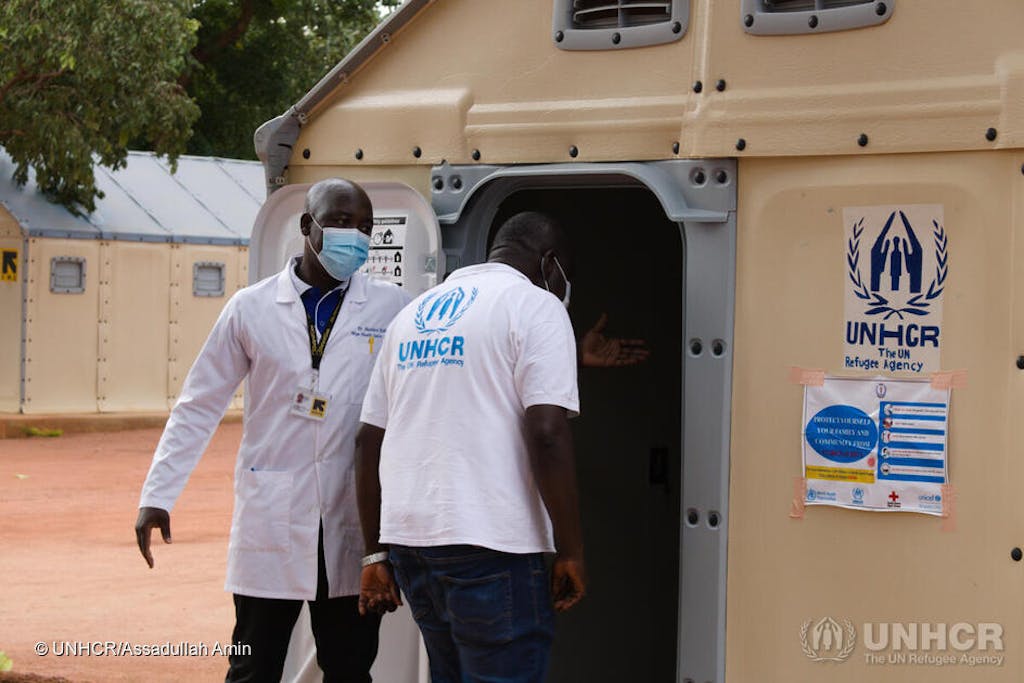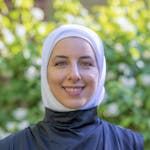In South Sudan, COVID-19 is yet another challenge that risks overshadowing the preexisting humanitarian needs of the most vulnerable. Thanks to funding from the COVID-19 Solidarity Response Fund, the UN Refugee Agency (UNHCR) — in collaboration with partners such as the International Rescue Committee (IRC) — has been able to provide lifesaving support, including health assistance in clinics and hospitals across refugee-hosting areas in the country.
UNHCR’s Martim Empis Gray Pereira spoke to International Rescue Committee physician Matthew Kelion, who treats patients and locals at the Pamir refugee camp in South Sudan. Dr. Kelion has worked at the camp, which hosts more than 120,000 refugees, since 2016. On average, he sees up to 1,300 people each week both on-site and in the surrounding area, which is home to about 10,000 South Sudanese who are also able to access the health services.
As of March 2021, around 400 tests have been conducted for suspected COVID-19 cases among refugees, host communities, and front-line humanitarian workers and health staff. A total of 75 refugees and 33 nationals have been diagnosed as positive, along with 27 humanitarian aid workers. No deaths have been recorded.
The interview has been edited and republished with permission.
How serious is the risk of COVID-19 for refugees in camps such as Pamir?
Dr. Matthew Kelion: Just like any other population, the refugee community continues to be very vulnerable, in particular because of their living conditions. Multigenerational families are sheltering together and sharing confined spaces with vulnerable grandparents and newborns, with little space to ensure social distancing within the home. In addition, refugees face additional hurdles as a result of their status, including in terms of their economic well-being. They are fully reliant on humanitarian assistance, and the economic impact of COVID-19 has further deteriorated displaced families’ ability to support themselves.
What is being done to prevent COVID-19 in Pamir?
MK: At the Pamir Primary Health Care Centre (Hope PHCC), there have been a number of changes to programs to strengthen infection prevention measures, thanks to support from UNHCR. Through risk management and community engagement teams, COVID-19 awareness messaging is also being shared with refugees and the surrounding host communities, with an emphasis on hand-washing with soap, social distancing, and respiratory etiquette.

What infrastructure has been constructed to prevent and treat COVID-19?
MK: We’ve been able to establish isolation sites at the health facility with UNHCR support, which we use to treat patients with COVID-19. We also have an intensive care unit with a portable ventilator, oxygen concentrators, hospital beds, and essential medical items where COVID-19 patients that are severely ill or in critical condition can be managed.
How many cases of COVID-19 can be accommodated in the new isolation centers?
MK: We have three isolation centers and one intensive care unit, which can accommodate up to 24 patients. These facilities are managed by staff, some of whom have received training from the Ministry of Health and the World Health Organization (WHO).
Who can use these isolation centers?
MK: The isolation facilities can be used by patients from the refugee community, as well as the host community. Anyone who comes to access the health services here can be cared for in these facilities by our medical team.
What is the capacity to test for COVID-19 at Pamir?
MK: Thanks to UNHCR, we were able to upgrade a machine called GeneXpert in the health facility so that it now has the capacity to test for COVID-19. Initially the machine was used to diagnose tuberculosis (TB), early infant diagnosis for HIV (EID) and viral load count for HIV, but with the pandemic, it was upgraded with the inclusion of COVID-19 cartridges so that we can detect cases in the camp.
How do UNHCR and IRC work together at the camp?
MK: In addition to funding, UNHCR provides coordination support and guidance to the IRC medical team to implement health and nutrition activities, including through monitoring and program design. The UNHCR public health team also provides technical support and quality control and works with relevant agencies like WHO, the Ministry of Health, and IRC to provide training and other capacity-building activities.
What do you like the most about your work?
MK: We have limited resources here, but what I value most is that we are still able to use these resources to provide the best health care possible to refugees and their host communities and ultimately save lives. To me, that is most important.
Featured Photo: UNHCR



 View All Blog Posts
View All Blog Posts


